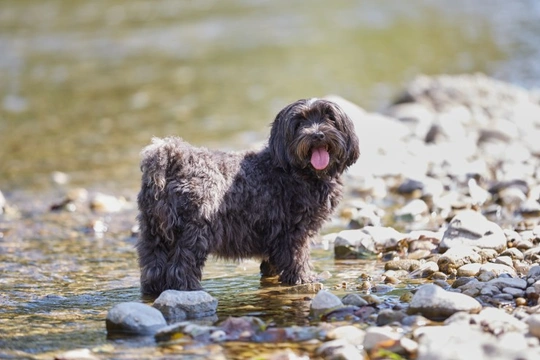
Teaching your dog to stay safe around water
The vast majority of dog breeds are able to swim instinctively, and even if they find themselves in water unexpectedly, will work out a way to get to the bank and get back out again. However, some breeds and types of dog are not able to swim effectively, and even a keen, competent swimmer may find themselves getting into trouble in cold or unknown water sources, particularly if they love swimming so much that they will try to launch themselves into every lake, pond or stream that they pass!
Proper supervision is vital when it comes to dogs and water-whether they are swimming, or you are keen to keep them out of the water. There is no substitute for proper supervision and management, but there are several different commands and skills that you can teach your dog that will help to keep them safe around water, be that when swimming or simply alongside of a water source.
Read on to learn about some tips and skills that will help to keep your dog safe in and around water.
Can your dog swim?
The first step when it comes to keeping your dog safe in and around water is to establish their ability when it comes to swimming, which as mentioned above, can be different for every dog. If your dog may be aquatically challenged, it is a good idea to take them to a canine hydrotherapy pool or other safe environment where they can get their toes wet with supervision, so that you can find out your dog’s ability, how they feel about swimming, and introduce them to swimming in the best possible way.
Commands around water
While some dogs view any source of water other than their bowl with marked distaste, some dogs are hugely keen swimmers, and certain breeds like the Labrador retriever will usually instinctively want to get into the water and splash around! This is why teaching your dog commands that will help to keep them safe and under control is so important, and these will prove effective not only when it comes to swimming and walking alongside of water, but in other situations too.
When walking alongside of water sources (such as streams, lakes or reservoirs) keep your dog close, and if they cannot be trusted to stay dry, on a lead. Teach your dog to come back to you when called, even when they are excited, and make it a firm rule that your dog does not get into any water until you tell them that they can, and in the place that you show them.
This will help to keep your dog from leaping into an unknown water source and/or water that will be too cold, or jumping into water that they will not be able to get back out of with ease.
Rules for swimming
If your dog likes to swim and you have found a clean, safe water source where you can enable this, you should still have some rules in place! First of all, work on your dog’s “no” or “stop” command until it becomes second nature, to keep your dog from leaping into the water on their own.
Identify a location where your dog will be able to get into the water safely and at their own pace, and vitally, where you will also be able to get them back out of the water without a problem too.
Ensure that your dog waits for a command to enter the water until you are ready and in a safe spot, and keep an eye out for diversions such as other dogs already playing, which may divide your dog’s attention.
You should also teach your dog that just because they are allowed to swim in the water one day, this does not mean that they will automatically be allowed to tomorrow!
Response call
When teaching your dog the recall command, it is also a good idea to teach your dog a bark response to it, so that you will know that they have heard you, and importantly, to tell you their location if they are stuck or for some reason unable to return to you.
This cue can come in handy when it comes to water safety, so that you can ascertain where your dog is, and if they are on land or in the pool.
Buoyancy aids
Some dogs can benefit greatly from buoyancy aids-you can buy lifejackets for dogs in all shapes and sizes-in case they get into difficulties, and also, to make them stand out in the water. Even if your dog does not need one, it is a good idea to use a snugly fitting harness that does not restrict your dog’s movement in the water, to provide something to grip on to if your dog needs help getting out!
If your dog gets into difficulties
Assessing the water source, access and temperature are all essential elements of water safety for dogs, but dogs can still get into difficulties in the water. Water may be colder further out, your dog may develop cramp, or something else may happen that causes a problem in the water. The most important point to note in this situation is that you should not go into the water after your dog. If you get into problems, you will be no help to your dog, and may place your own life at risk too.
Call for help, and try to encourage your dog back to the bank-even if you cannot lift them out, you may be able to grab their harness to keep them buoyant until help arrives. Always check out the stability of the bank first, and if possible, get a lead or rope onto your dog’s harness to avoid getting too close to the water yourself.



